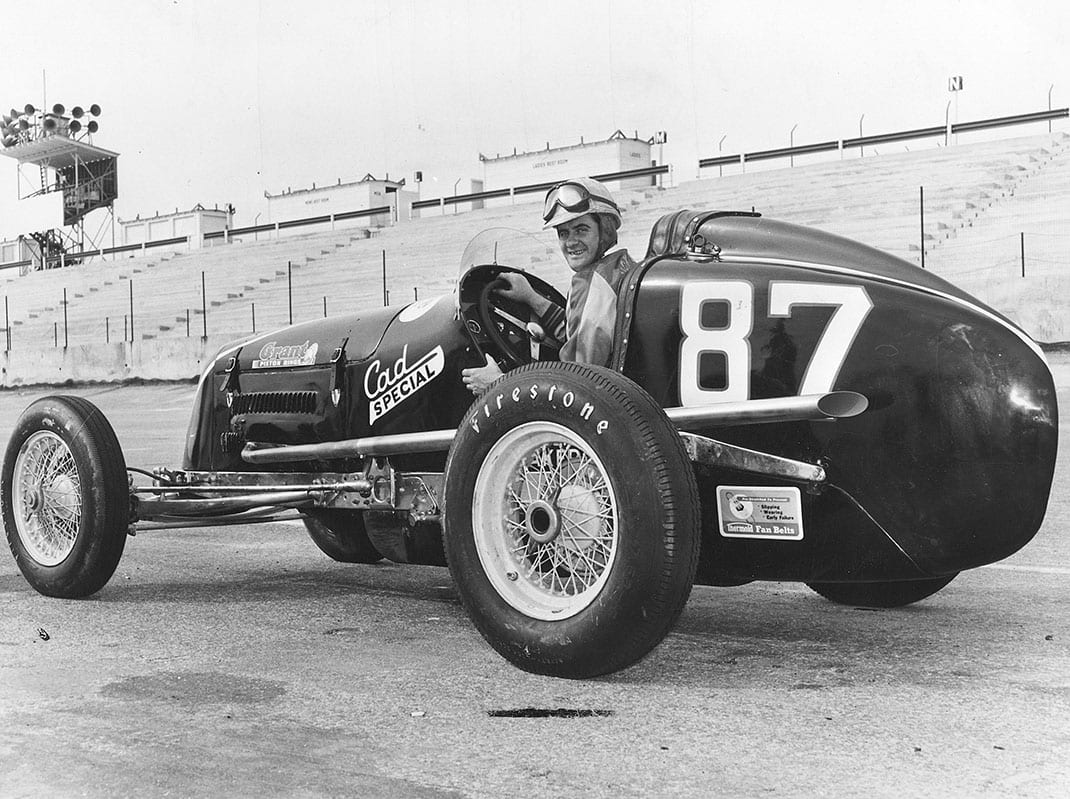In an effort to draw more fans toward NASCAR, France elected to add a modified-sportsman race at Darlington on the same day as the AAA event in Raleigh. Twelve-thousand NASCAR supporters saw Curtis Turner wheel his Ford to victory after 200 laps at Darlington. Sadly, the race was marred by the death of Rex Stansell prior to Turner taking the checkered flag.
NASCAR issued a statement shortly after July 4 saying, “The Raleigh event failed to live up to its advance billing,” citing that Ruttman’s winning average speed of 89.109 mph was much lower than what the AAA expected.
It was the beginning of a private feud that lasted for decades, including an incident on May 13, 1954, when France was escorted from Indianapolis Motor Speedway during practice for the Indianapolis 500. France was in Indiana for a meeting with officials of the Indiana State Fairgrounds where he had hoped to sanction a future NASCAR race.
Interestingly, two years after France’s death on June 7, 1992, NASCAR raced at Indianapolis Motor Speedway for the first time on Aug. 6, 1994.
The Speedway division’s inaugural season was rather short. On May 25, 1952, the second Speedway race was held at Martinsville (Va.) Speedway with Tex Keene prevailing over Jack Smith and Baker.
On May 30, Wally Campbell went to victory lane at the Monroe County Fairgrounds in Rochester, N.Y., over Keene and Bill Miller.
Then on June 1, Miller won on the three-quarter-mile Charlotte (N.C.) Speedway, which had hosted the first NASCAR Strictly Stock race in 1949.
On June 8, Keller was victorious over Smith, Campbell and Baker at Atlanta’s Lakewood Speedway.
One week later, Cherry won over Jim Reed and Bill Spear at Pennsylvania’s Heidelberg Raceway. In the final race of the season at Langhorne (Pa.) Speedway, Cherry triumphed over Steve Yanigan, Campbell, Bonadies and Keene.
With a season-opening win and only one finish outside the top-10, Baker was crowned Speedway division champion.

Baker began his driving career in 1939 and joined NASCAR in 1949. When the Speedway division came to fruition, Baker was one of the first France called upon to compete there because of his longstanding popularity with the fans. It was his hard-charging style of driving that kept them coming back each time he raced in any NASCAR division.
“My first break came when I went to the Charlotte Fairgrounds (June 19, 1949),” Baker said in the October 1992 issue of American Racing Classics. “The late Grady Cole, a radio announcer, saw me drive. I started near the rear and went though the field. Whenever Cole saw me drive, he said, ‘I believe if that guy had something to drive, he would make a driver.’ I had a lot of determination. I think I hit everybody out there. For a long time, I felt it was easier to knock them out of the way than it would have been to race with them. That’s the way I drove. I was making enough money to get by on, but I was making a lot of enemies.”
Baker’s name and style of driving didn’t save the division as interest among fans and promoters never developed. The second and final season for the Speedway cars was in 1953 with only four races being run. Campbell, Wayne Aspaugh, Dick Frazier and Pete Allen were the winners with Allen crowned champion.
Baker’s son, 1980 Daytona 500 winner Buddy Baker, felt his father was one of the best in anything he drove.
It’s believed Buck Baker won more than 650 short-track races with 46 victories coming in NASCAR’s premier series, including three Southern 500s at Darlington. The elder Baker also collected NASCAR Cup Series championships in 1956 and ’57.
“He could do things in a race car I could only dream about,” said the younger Baker. “Throughout the entire racing world, I don’t know of anybody who would have said he didn’t give 110 percent from the time they dropped the green flag until the race was over. He was the same way in life, too.”
H.A. “Humpy” Wheeler, former president and general manager of Charlotte Motor Speedway, recalled how strange it felt to see open-wheel cars as part of NASCAR’s lineup.
“Big Bill (France) saw the popularity of open-wheel racing in the Midwest and wanted to be a part of it and was determined to start his own series,” Wheeler said. “There was a plethora of open-wheel cars around at that time that weren’t being used. Still, in the end, there just wasn’t a connection to that type of racing with fans in the South. They just couldn’t identify with the open-wheel cars and didn’t relate to them like they did stock cars.”
